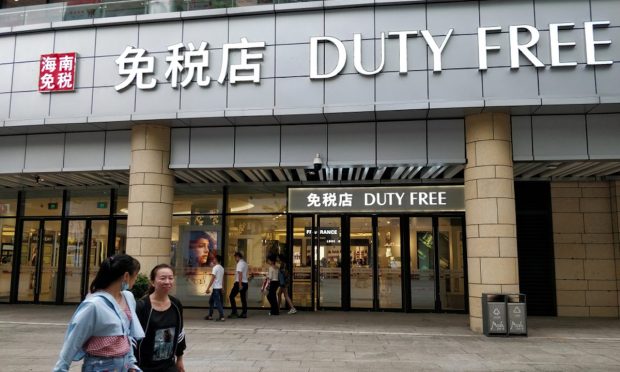Chinese Tourism Spending Down During Week-Long National Holiday

Chinese consumers spent about 1.64 billion yuan ($252.3 million) on luxury goods at nine duty-free shops in southern island province Hainan in the first six days of the week-long National Day holiday that ended on Thursday (Oct. 7), according to a CNBC report.
Those figures were up 75% from the same time a year ago and a whopping 359% from the 2019 figures for what’s become known as China’s Golden Week, according to a state media report cited by CNBC, as Hainan has become the go-to spot for luxury items, with travel restrictions across China.
Beijing’s zero-tolerance policy when it comes to the COVID-19 pandemic has included contact tracing and lockdowns that can limit how much Chinese people can travel, especially on short notice. Tourism spending for Oct. 1-7 was about 389.1 billion yuan, about 60% of the same time two years ago and 4.7% less than in 2020, according to China’s Ministry of Culture and Tourism.
Tourist trips across China topped 515 million during Golden Week this year, which is about 70% of 2019 levels and 1.5% less than last year, according to the ministry.
Car rentals, though, were up 43% during National Day holiday week from 2019 levels, according to Trip.com, which said the average one-way airplane ticket cost 821 yuan (about $127.50) this year, up 7% from one year ago.
Related news: Luxury Brands Seek New Consumer Connections as End of Pandemic Remains Elusive
PYMNTS research shows that luxury sales took a 23% hit last year, when most people put fashion on the back burner. Sales have begun to rebound somewhat lately, though, with Bain & Co. saying earlier this year that luxury goods could fully return to pre-pandemic levels next year, faster than projections that it would take until 2023.
PYMNTS data shows that the anticipated “end” of the pandemic now stretches into the winter of 2021 or early months of 2022, but that the share of consumers who are “very” or “extremely” concerned about the pandemic was at 29% at the end of July, down from 70% at the same time in 2020.
Mastercard’s spending projections for the holiday season show a 93% year-over-year increase in luxury goods in November and December and a 56% increase compared to 2019.
